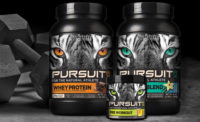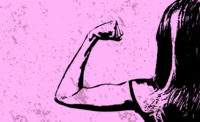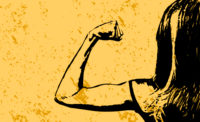Isn't it Iconic?
Isn’t it Iconic?
By Stacey King Gordon
What’s the secret to elevating your packaging to iconic status? Learn from four brands, old and new, that have struck on the magic formula.
The concept of designing an iconic package—a package that, in its essence, becomes a signature part of the overall brand—has become something of a holy grail for brand managers and package designers these days.
And it’s easy to understand why. Step into one of the Coca-Cola company’s massive collectibles stores and witness refrigerator magnets, beach towels and nightlights all emblazoned with the vintage contour glass Coca-Cola bottle, which is virtually extinct from store shelves but which the Atlanta-based company still uses prominently in the visual depiction of its brand. It’s enough to make any brand steward’s mouth water with the dream of creating the same kind nostalgia, loyalty and love that the 90-year-old Coke bottle has inspired among millions of consumers worldwide.
It’s fair to say that most decades-old packages were not designed with the goal of becoming beloved icons. The stories of their origins many times sound like beautiful accidents: the bottle took on its shape so it would be more sturdy and stable on the production line, or it got its graphic treatment from some whimsy of the company’s founder. It just happened that their design, not to mention the taste of the product inside them, hit a nerve with the public. That spark grew over time into loyalty, and even nostalgia.
Newer brands don’t have the luxury of age, but they do have plenty of data to show what works and what doesn’t in the overcrowded arena of the grocery store shelf. Still, there’s no flawless science to designing a package that will become a truly essential part of the brand. The package that sends a product leaping off shelves when it first launches may or may not have the meaning and emotional connection that gives it staying power in consumers’ hearts and minds.
The four brands profiled in this article have packaging that has reached iconic status, whether over four years or 100 years. While each story of how they got there is unique, there are a few things these packages have in common that have elevated them to a point where the they have become the brand, or at least a very big part of it.
1 They’re simple. Iconic packages steer away from the ornate and opt for strong, simple shapes and graphics. “Packages nowadays are so often over the top; they pull all the tricks they can to sell products,” says Andy Gutowski, partner and creative director at packaging design firm Object 9 in Baton Rouge, La. “But the really iconic packages, like Coke or Campbell’s, stand out for their distinctiveness and simplicity.”
2 They use bold, basic colors. Gutowski points out that many of the traditional iconic packages have something quite coincidental in common. “A lot of them are white and red!” he says. Red and white isn’t the only winning color combination, of course, but the packages that stand out in consumers’ minds tend to be ones that adopt a simple, contrasting color palette that doesn’t introduce too many accent colors or competing elements. That a consumer can recall without thinking twice that the Kraft macaroni and cheese box is blue and yellow, the Q-tips dispenser blue and white, the Tide bottle orange and yellow means the core colors work together successfully to trigger consumers’ memories.
3 They dare to be different. Package design is a tough balance. On one hand, a brand doesn’t want to stand out too much—basic sameness in package design within a category is safe and puts competing products on the same level. But iconic packages are ones that “had the courage to step away from category cues,” says Rob Wallace, managing partner at Wallace Church, a New York-based brand identity and packaging design firm. With some slight but meaningful change, these packages gain an edge by becoming even more memorable and distinctive at the shelf.
4 They know when to hold ’em and when to fold ’em. In other words, stewards of the brands are confident enough in the package that they don’t react to the winds—or, as in the case of many package designs, light breezes—of change. Recognizing when they have a sure thing on their hands, the brand managers have protected the package’s core design over the years, refusing to veer from their course in the face of fads and competition. They acknowledge when a light refresh or cleanup of the package architecture is necessary to keep a brand relevant and easy to shop, but they do the work to keep the emotional integrity of the iconic package intact. “Consumers can often draw from heart what a package looks like, but what they remember about it and how they feel about it can be two different things,” says Wallace. Deciding what and how much to change can be tricky, but in the end consumers must be left with the impression that they’re still buying their beloved product in its familiar old package, even if the package has been modernized and made more accessible.
5 They contain exceptional products. A package’s design can hit a home run, but if consumers don’t love and have emotional connections with the food or beverage inside it, the chemistry rarely works. “When you have a simple, distinctive package with a great product, you have a winner,” says Gutowski.
The Legacy of Four Iconic Packages
Coca-Cola
The contour Coca-Cola bottle is the mother of iconic packages—along with the beverage’s ubiquitous Spencerian script logo, the shape of the bottle is the core symbol of the brand. “Well over 90 percent of the world’s population can identify the bottle by its shape,” says Rod Tabert, group director of packaging for the Coca-Cola Co. “It is one of those objects that is more than a commercial package.”
From its inception in 1915, the glass bottle was intended to be distinctive. Soda water, beer and other beverages at the time were bottled in straight-lined glass containers, and Coca-Cola wanted its bottle to stand out. “A challenge was issued to several glass manufacturers to create a bottle so unique that a person could recognize it in the dark because of its unique shape,” Tabert says.
Indiana-based Root Glass Co. came up with the winning solution, a 6.5-ounce smoothly curved glass bottle. For the next 40 years, that bottle was the exclusive container of a product that, thanks to smart marketing, grew to a major consumer brand in the United States and abroad. The bottle even became a pop icon when featured in Andy Warhol’s paintings in the 1960s.
Even though the company began branching out in the 1950s, adding larger sizes of the contour bottle and eventually turning to more convenient and disposable plastic bottles and aluminum cans, it was the original 6.5-ounce bottle that stuck in consumers’ minds. “In addition to its distinctive shape, the bottle is probably the perfect single serve size…it fits perfectly in the hand,” Tabert says. There’s also the perception that the classic glass bottle equals the pure Coca-Cola experience. “Consumers always tell us that Coca-Cola tastes best in that package,” Tabert adds.
And even as the practicalities of the on-shelf packaging have changed, the image of the package hasn’t. A two-liter bottle of Coke being created for the 2007 holiday season incorporates the image of the glass contour bottle on its label, even if the bottle itself is chunky and plastic. “We like to think that the iconic bottle is as important as ever with our consumers. We continue to work every day to keep the iconic bottle image fresh in their minds,” Tabert says.
That’s because a key element of Coca-Cola’s brand is its heritage, and the company is always looking for ways to link its past to its future. “The authentic Coca-Cola bottle is a key part of our future,” says Tabert.
Heinz ketchup
Pounding the bottom of the glass bottle to dress up hamburgers and French fries is an association millions of consumers have with Heinz ketchup—which is why the 138-year-old Heinz Co. now sells 100 percent of its ketchup in the grocery channel in more convenient, easy-squeeze plastic bottles. Today, only 20 percent of the Pittsburgh-based company’s ketchup is sold in the traditional, “octagon” glass bottles, and then only to club retailers and restaurants.
So it’s curious that, in many consumers’ minds, the stubborn glass bottle still stands for the Heinz Ketchup brand. “We recently ran a consumer-generated advertising contest, and we were very surprised with the number of submissions that incorporated our glass bottles,” says Patrick Macedo, brand manager for the company’s ketchup line. “Our glass bottle symbolizes our product and carries a lot of equity, which we want to continually reinforce.”
The iconic Heinz Ketchup bottle has changed very little since it was created in 1887 to improve the handling of the existing package. The “octagon” bottle was less ornate than previous Heinz bottles and was made of clear glass so consumers could see the product inside. “This was a principle that H.J Heinz founded the company on: to sell pure products and enable consumers to see it,” Macedo says. The only major change to the bottle after that was the addition of a twist-off cap at the turn of the century.
Founding father Heinz also had a say in the design of the bottle’s label, which went on to serve as the shape for all Heinz products: it was in the “keystone” shape of Pennsylvania, home to the company’s headquarters. The sturdy, geographic feel of the label also made it easy to remember.
Macedo says it’s hard to tell if it’s the bottle design itself that has made the Heinz package such a nostalgic favorite among consumers, or if it’s the association with the ketchup inside the bottle. Either way, the bottle has stuck in consumers’ minds for 120 years with few changes, because it just works.
“It’s not rocket science,” says Macedo. “It’s an aesthetically pleasing bottle. It’s hard to describe why. But people just like it.”
Red Stripe
American consumers might not realize it, but Red Stripe beer has been around nearly as long as some of the most venerable U.S. brands—but it’s only been sold in the United States since the 1970s. The premier beer in Jamaica since the early 20th century, Red Stripe has now become recognized worldwide as the import in the stubby brown bottle—a memorable distinction that sets it apart from its peers.
The Jamaican beer company began sourcing its bottle manufacturing from a company in Canada in 1972. At that time, most Canadian beers used the “stubby” bottles, wide-body bottles with short necks, which is how Red Stripe adopted the form. From a production standpoint, the bottle was ideal.
“It has a low center of gravity,” says Grace Silvera, Red Stripe’s international marketing director. “The bottle does not topple on the production line, has better stability and allows the production line to run faster.” The company also discovered added benefits of the stubby bottle. “The bottle’s shape is such that it takes less space on the delivery units and in refrigerators, and when chilled, it retains the temperature longer.”
Silvera says that the beer grew in popularity and recognition as more travelers began vacationing in Jamaica and discovered the product and its unique bottle, and that a large Jamaican expatriate population in the United States also helped to implant the beer in American culture.
But a major part of the beer’s advantage in its new U.S. home has been its highly recognizable, iconic bottle, which Silvera says embodies Jamaican culture. “The Red Stripe packaging is striking in its simplicity,” she says. “It’s underdesigned, simple graphics reinforce the authenticity of the Jamaican provenance and signifies one of the brand’s core values—being real.” The no-frills bottle is understated and unique, allowing the beer to speak for itself. And the shape of it and bold, simple graphics mean it stands out from the rest, whether in the grocery store or in a bar.
Red Stripe several years ago refreshed the graphics on its bottles sold in the Jamaican market; Jamaican consumers who have lived with the brand for nearly 90 years were hungry for an update. But the classic Red Stripe bottle remains the same as always in the U.S. market. Consumer research has shown that the brand appeals to independent-minded U.S. customers who like products that are “the anecdote to commercialization,” Silvera says. “They are looking for things tried and true.”
Ciao Bella
The Ciao Bella brand of gourmet gelato and sorbet has technically been around for two decades, but it was only packaged for retail in 2003. But the relative newcomer is proof that becoming an iconic package doesn’t require a near-century of exposure. Sometimes brands can rise to iconic status if they strike upon just the right design chemistry.
A little gelato shop in New York City for 20 years, Ciao Bella had been selling its gelato and sorbet to restaurants for years and was planning to move into the grocery channel, focusing on specialty markets. The company needed a way to differentiate its products from ice creams and frozen yogurts—and position its products as frozen treats that were something special.
“The company was entrepreneurial, and couldn’t afford photography, but photography wouldn’t initiate the visceral response they wanted anyway,” says Rob Wallace of Wallace Church, the firm that created the Ciao Bella package design. Instead, the package relied on bold, attractive icons.
Color has become an essential part of the package as well, visually evoking the exotic flavors of the product inside. “Instead of owning one color, we decided to own all the colors,” Wallace says. Each line of flavors uses its own bold, contrasting color combination. The color and graphics create a package that can be recognized anywhere, from across the room.
The package design has played a key role in the expansion of the brand—sales doubled in the year after the package rolled out and, since then, Ciao Bella has opened its own retail locations, placed its products in large natural food retailers such as Whole Foods, and captured the attention of the mass merchandise market. The success of the package is in the way it so beautifully captures the essence of the brand: as a high-end, unique, friendly and colorfully flavorful product.
Looking for a reprint of this article?
From high-res PDFs to custom plaques, order your copy today!






